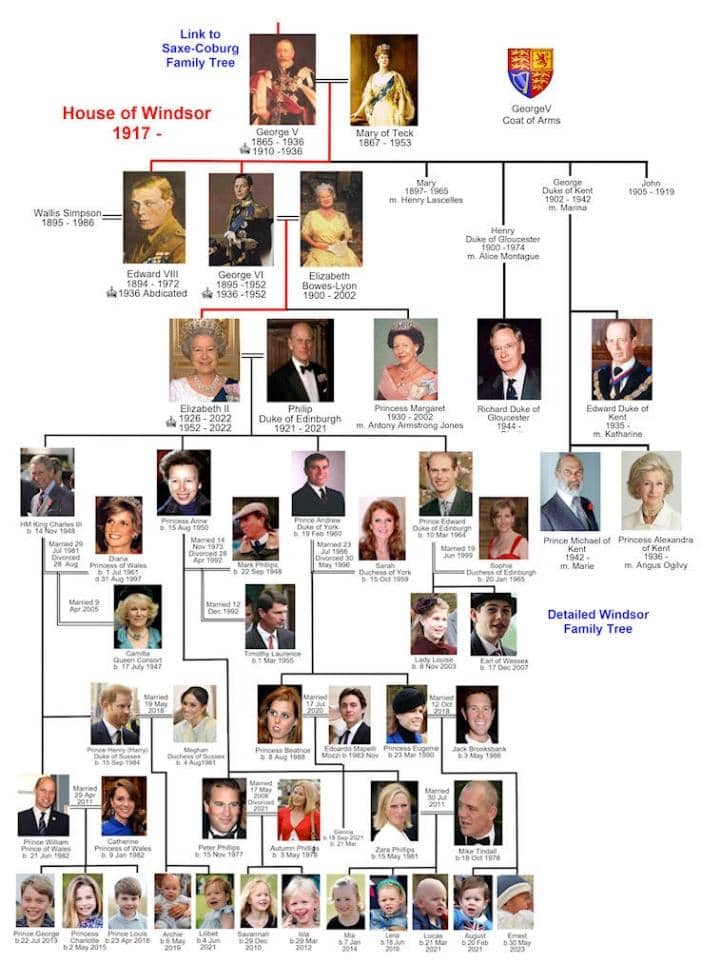The House of Windsor is the reigning royal house of the United Kingdom and other Commonwealth realms, founded on July 17, 1917, by King George V. The name “Windsor” was adopted during World War I to distance the royal family from its German roots, specifically the House of Saxe-Coburg and Gotha, reflecting the anti-German sentiment prevalent at the time.
Windsor derives from Windsor Castle, a historic royal residence in Berkshire, which symbolizes the monarchy’s enduring legacy.
Throughout its history, the House of Windsor has produced five monarchs: George V, Edward VIII, George VI, Elizabeth II, and the current monarch, Charles III. Each monarch has played a significant role in shaping modern British history.
George V was known for his efforts to connect with the public during World War I, while Edward VIII’s abdication crisis in 1936 highlighted the tensions between personal desires and public duty. His younger brother, George VI, restored stability to the monarchy during World War II.
Queen Elizabeth II ascended to the throne in 1952 and became the longest-reigning monarch in British history. Her reign saw significant changes in British society and the Commonwealth. She undertook numerous official engagements worldwide and was known for her dedication to public service.
Elizabeth retained the Windsor name for her descendants, reinforcing the house’s identity despite her husband Prince Philip’s Mountbatten heritage.
The House of Windsor has also adapted to changing political landscapes. Following decolonization and shifts within the Commonwealth, the royal family’s role evolved from being rulers of an empire to symbolic figures uniting various independent nations.
The Windsors have faced challenges over the years, including public scrutiny and scandals that tested their relevance and connection with the public.
Today, under Charles III, the House of Windsor continues to navigate modern challenges while maintaining its historical significance. The monarchy remains a symbol of continuity and tradition amid evolving societal norms and expectations.
As it moves forward, it seeks to balance its rich heritage with contemporary values and issues facing Britain and the Commonwealth.

